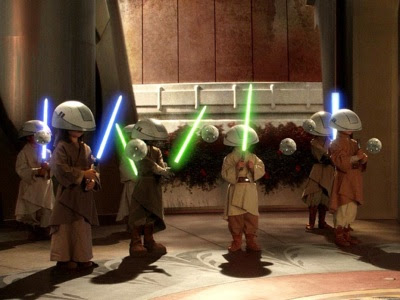The Force of Unsupervised Learning
Introduction: Journey to a Galaxy of Unsupervised Learning
In a galaxy far, far away, where starships soar and Jedi knights wield the Force, the power of knowledge is as potent as the Force itself. In our data-driven universe, one of the most intriguing aspects of Machine Learning is Unsupervised Learning—an enigmatic force that reveals hidden patterns, just like the mystical energy field of the Star Wars universe. Join us as we embark on a journey to explore the galaxy of Unsupervised Learning.
Section 1: The Unseen Threads of Data, We Shall Find
In the Star Wars universe, Obi-Wan Kenobi famously described the Force as "an energy field created by all living things. It surrounds us, penetrates us, and binds the galaxy together." Similarly, Unsupervised Learning seeks to find the unseen threads that bind our data together. It's a machine learning technique that operates without the guidance of labeled data.
The Force of Clustering: Just as the Force connects all life forms in the galaxy, clustering algorithms in Unsupervised Learning group similar data points together. Think of it as discovering different species in the Star Wars universe—Wookiees, Ewoks, and Jawas, each grouped based on common characteristics.
Dimensionality Reduction as a Jedi Mind Trick: Like Jedi knights who use mind tricks to influence perception, dimensionality reduction techniques in Unsupervised Learning simplify complex data while preserving essential information. This is akin to distilling the essence of the Force to understand it better.
Section 2: The Rebel Alliance of Dimensionality Reduction
In Star Wars, the Rebel Alliance consists of various species and backgrounds coming together for a common purpose—to fight the Empire. In Unsupervised Learning, dimensionality reduction techniques create their own alliance to combat the overwhelming complexity of data.
Principal Component Analysis (PCA): PCA is the Luke Skywalker of dimensionality reduction, reducing data dimensions while retaining essential information, much like Luke finding his inner Jedi powers.
t-SNE (t-distributed Stochastic Neighbor Embedding): Think of t-SNE as the diverse ensemble of Rebel Alliance members, as it excels in visualizing high-dimensional data in two or three dimensions, revealing underlying structures.
Section 3: Clustering Algorithms: The Galactic Senators of Data
In the Star Wars Senate, representatives from various systems convene to make decisions for the galaxy. Clustering algorithms in Unsupervised Learning are like the Senators, categorizing data into meaningful groups.
K-Means Clustering: Much like the Senate's meetings, K-Means gathers representatives (data points) into clusters based on their similarities, making it easier to manage and analyze.
Hierarchical Clustering: Hierarchical clustering is reminiscent of the Senate's complex hierarchy, grouping data into a hierarchical structure, revealing relationships at different levels.
Conclusion: The Power of Unsupervised Learning, a Force to be Reckoned With
Just as the Force is an integral part of the Star Wars narrative, Unsupervised Learning is a powerful force in the realm of data analysis. It helps us discover hidden patterns, simplify complex data, and make sense of the galaxy of information surrounding us.
So, as you venture further into the world of Unsupervised Learning, remember the wisdom of Yoda: "In learning, you must unlearn what you have learned." Embrace the force of Unsupervised Learning, for it holds the key to unlocking the secrets of data, just as the Force holds the key to the Star Wars galaxy's mysteries.



Comments
Post a Comment